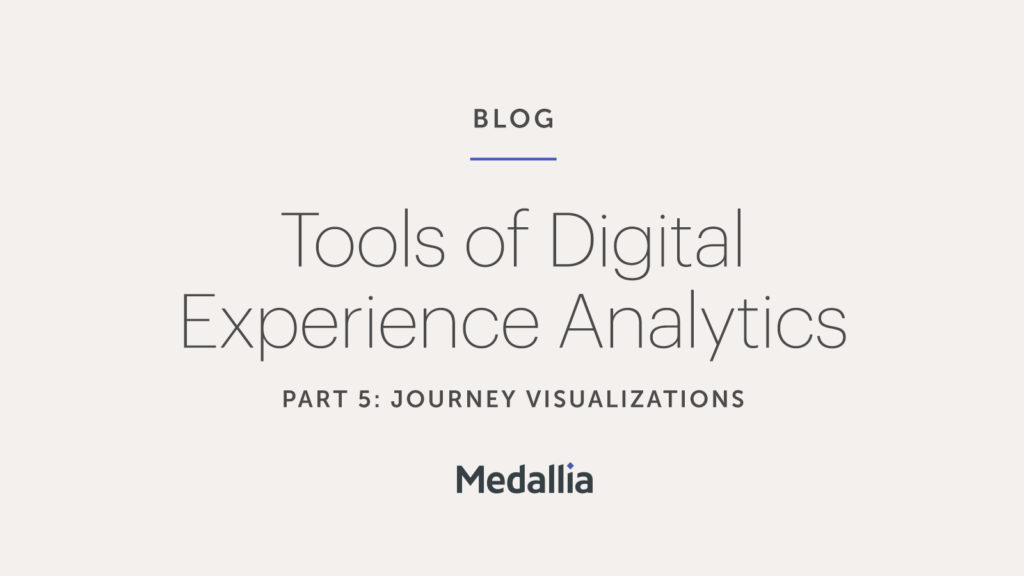When it comes to creating a personalized digital experience for your prospects and customers, you might not immediately think that AI, automation, and other innovative tools are the key to adding a personal touch. In fact, the perception is often that these technologies prioritize efficiency over genuine connection.
But what if you could have both?
By being strategic and leveraging the right technology, you can equip your business with the tools to deliver personalized digital experiences and relationship-driven engagement at scale.
With the wealth of customer data and analytics now available, there are endless opportunities to customize every interaction for a chance to connect meaningfully with your audience — if you know where to start.
What Is a Personalized Digital Experience?
A personalized digital experience tailors online interactions to the unique preferences, behaviors, and needs of each user. By leveraging data and analytics, businesses can deliver experiences, content, recommendations, and services that resonate with specific customers. An online store, for example, might show visitors relevant products based on their browsing history.
Importance of Personalization
Businesses that prioritize personalization are demonstrating that they value customers, their time, and their preferences. By adding value on a more personal level, companies can foster meaningful engagement and create more satisfying experiences. In turn, these personalized digital experiences increase the chances of repeat visits, conversions, and overall customer loyalty.
Plus, taking into account the modern customer journey — one in which consumers interact with brands across several digital channels — a personal touch helps businesses stand out in a saturated market and create sustainable, long-term success by forging stronger connections between brands and buyers.
Key Components of Personalization
If you want to tailor a personalized digital experience to a particular user or customer segment, you need to understand what it is they want or need — and meet these wants and needs. This can be done by gathering and analyzing user data by leveraging AI for predictive insights, creating dynamic content, and ensuring that all digital platforms are integrated and optimized. These building blocks create the foundation of customer loyalty and engagement.
Let’s continue building on our foundation and outline the key components of a robust, scalable personalized digital experience strategy.
Customer Personas
Defining your customer personas involves developing detailed profiles that capture the essence of your target audience and requires getting to know them on a deeper level. After understanding the needs, preferences, and pain points of a particular persona, you might create the “Tech Savvy Terry” profile, for example, which represents a segment that values the latest tech advancements and innovation.
A strategic, insights-driven approach to crafting personas will fuel the creation of targeted content and customized communication to ensure each interaction will strike a chord that resonates.
Customer Segmentation
Building on customer personas, customer segmentation then categorizes your audiences into groups based on their observed behaviors and interactions. These groups might include “frequent buyers,” “new visitors,” “inactive,” and other segments based on measurable data, such as purchase history and online engagement.
Customer segmentation, as part of a personalized digital experience strategy, allows you to move from broad personas to actionable segments that can be targeted with precise, relevant marketing. Tools for collecting and analyzing signals, customer feedback, and digital experience insights can be used to uncover key customer segments.
Content and Experience Creation
Tailoring experiences and content creation is a powerful strategy for delivering personalized engagement, especially after you’ve identified your buyer personas and segmented your customer base. This component involves crafting relevant, engaging content and experiences tailored to each segment to ensure that materials and interactions resonate across various channels. For instance, customer experience orchestration technology can be used to pinpoint real-time customer intent and use these insights to deliver personalized digital experiences — the next best content, experiences, and actions for customers, ensuring every interaction, whether on your website, via email, or through customer support, is carefully adapted to feel personal and relevant.
AI and Automation
Leveraging AI-powered predictive analytics can help you automate the personalization process so that you can seamlessly adapt content to match the unique preferences of each customer segment. For example, AI can dynamically insert customized product recommendations into emails and tailor social media ads to promote products a customer has already placed into their online cart.
Data Collection
Underpinning both content and the effective use of AI and automation is sophisticated data collection. Gathering insights into users and how they interact across all your brand’s touchpoints allows you to remain responsive and make refinements to your buyer personas, customer segments, and personalized content as things shift and adapt. Tools like digital experience analytics, customer data platforms, customer experience management platforms, and customer relationship management software (CRMs) are key components of data collection that help inform and optimize your personalization strategies.
Implementing Personalization Strategies
Like with any strategy, implementing personalized digital experiences is an ongoing, iterative process. Here’s a step-by-step guide that aligns user behavior, preferences, and innovative technology to ensure your efforts delight your customers and drive measurable results.
1. Define Objectives
A personalized digital experience strategy needs to have — you guessed it — its own personalized goals. Setting clear, measurable objectives paves the way for a successful personalization strategy, so whether you want to boost engagement, increase sales, or improve customer satisfaction with higher Net Promoter Survey® (NPS) scores, it’s critical to define what you want to achieve and identify the metrics that will guide your journey.
2. Understand Your Audience
Understanding your audience on a deeper level is about harnessing real-time data to adjust your strategies based on their evolving needs. By using digital insights to understand users and their behavior with more nuance, you can predict and respond to their actions in a personalized way.
3. Collect and Analyze Data
Fine-tune your approach while creating personalized digital experiences by leveraging advanced digital behavioral intelligence tools to collect and analyze data from each interaction. Gathering and employing this data is an ongoing process — not one-off. To ensure your strategies stay agile and customer-centric, make sure you’re tailoring your approach in real time.
4. Use Automations
Speaking of real-time personalization, AI and automation technologies are the key to remaining adaptive. In addition to automating content delivery, integration ensures a consistently positive experience across digital touchpoints. For example, brands can use digital behavior signals to pinpoint signs of frustration and automatically surface a live chat for support. Similarly, intelligent callback tools can be used to enable customers to automatically schedule a callback or live chat session when it fits their schedule, rather than having to wait in a queue. And smart response technology solutions can be used to provide contact center agents with instant AI-generated personalized responses to customer inquiries.
5. Use UI & UX Design
User interface (UI) and user experience (UX) design are integral parts of the personalized digital experience. Along with being aesthetically pleasing, coherent, and aligned with your brand image, thoughtful design creates interfaces that adapt to a user’s individual needs. If your digital platforms offer personalized navigation paths and other settings that reflect the unique preferences and behaviors identified through your data analysis, then you can enhance the overall user experience and make it more satisfying for every visitor.
6. Test and Optimize
Finally, to be truly data-driven, don’t skip A/B testing when it comes to your personalization strategy. By gauging the effectiveness (and ineffectiveness) of different approaches and monitoring performance closely, you can isolate exactly what works best with which customers.
This iterative process to strategy, informed by real-time data and customer feedback, allows for continuous improvement and ensures your strategies never get stale or obsolete.
Best Practices for Personalized Digital Experience
In addition to leveraging the right technology, a successful personalized digital experience strategy takes consistency, measurement, and an eye for optimization. Here are some best practices to follow to get the most out of your strategies.
Keep Cross-Channel Consistency
To truly engage with consumers meaningfully, your business needs a digital presence that is consistent, connected, and coherent across all platforms. Whether a customer is interacting with your website, app, or social media, they expect consistent quality and messaging — make sure you’re delivering a cohesive narrative that strengthens brand recognition and builds trust.
Use KPIs for Personalization
Effective personalization is measurable. Define clear key performance indicators (KPIs) that reflect the goals of your personalization strategy, like increased user engagement and adoption, higher conversion rates, or improved NPS® scores. By allowing metrics to guide you, you’ll ensure that your strategy is not only creative but also results oriented and data driven. Plus, using KPIs is efficient, as you more quickly identify what’s working and where there’s room for improvement based on KPIs.
Tailor Customer Journeys
Leverage personalization insights to craft content and tailor digital experiences for each stage of the customer journey. From educational, bottom-of-the-funnel content for new visitors to customized offers for long-standing customers, different customers require a different touch at each step of their relationship with your brand. Serving up the wrong communication at the wrong time can significantly impact the momentum you’re looking to create.
Gather Customer Feedback
Listen to your customers by actively refining your personalization strategy based on feedback. Using AI and automation can make collecting and analyzing feedback — from surveys to reviews to customer service calls — an efficient, scalable process in real time. This ongoing optimization ensures your efforts remain aligned with the realities your customers are experiencing. Plus, being attentive and responsive is the best way to build deeper relationships.
Elevate Your Digital Presence with Medallia
By strategically employing AI, automation, digital experience platforms, and other innovative tools alongside expert strategies and best practices, you can create a personalized digital experience tailored to each customer, without sacrificing scale or efficiency.
If you’re ready to know exactly what your customers want, when they want it, and how best to give it to them, book a demo with a customer experience expert at Medallia to revolutionize your digital presence through tailored interactions.







